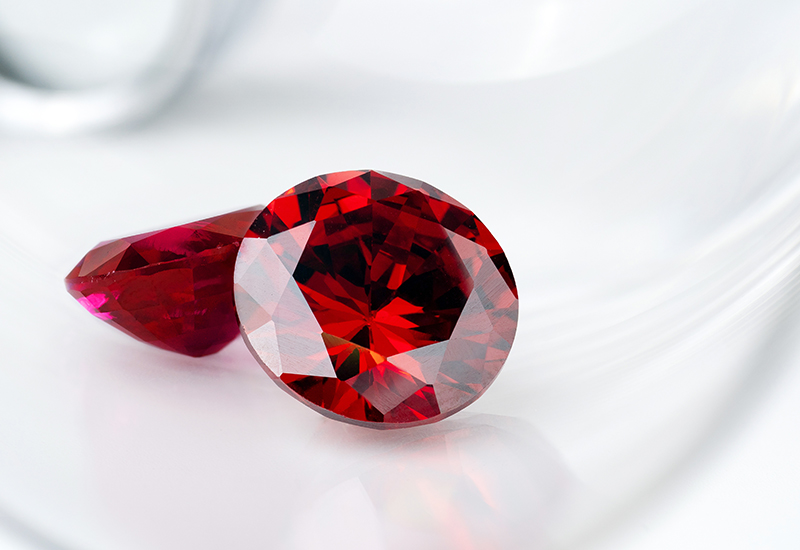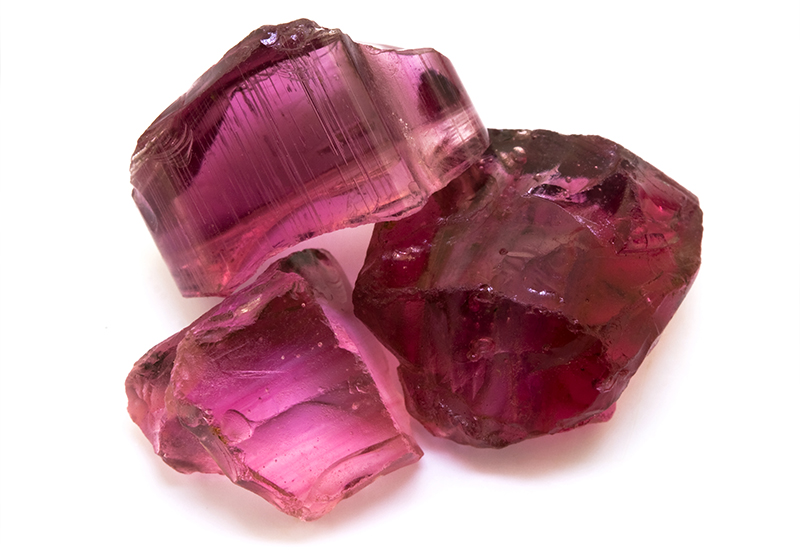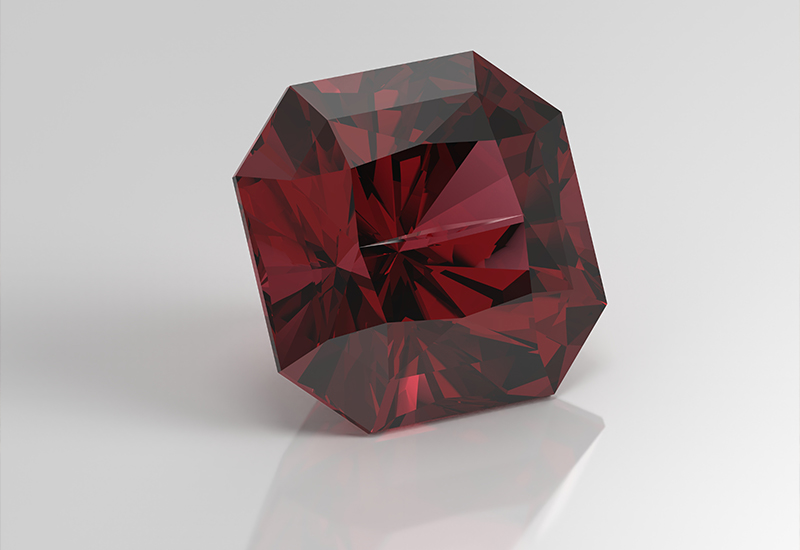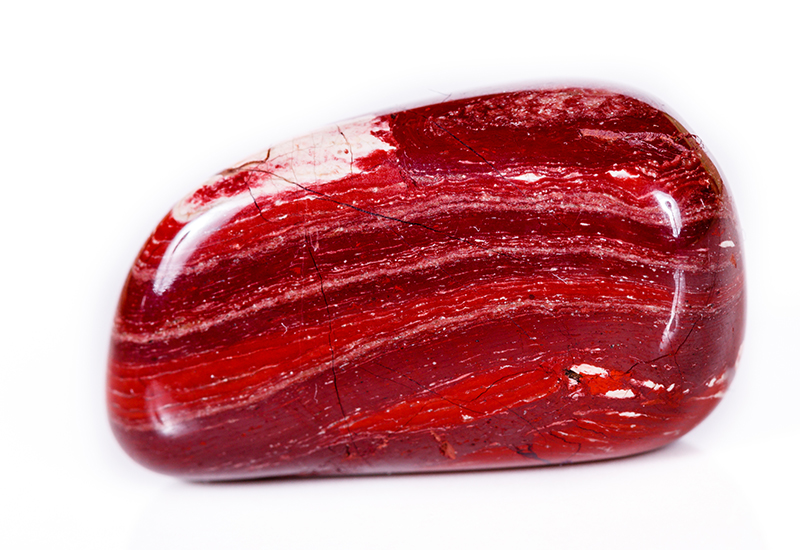Gemstones add colour and vibrancy to any outfit. And when it comes to colours, what is better than red? Red gemstones symbolize love, courage and passion. Irrespective of the type of jewellery you choose, red-coloured gemstones look outstanding. In this article, we will explore various red gemstones from the gemstone colour chart and about them in detail. Let’s get started!
Precious Red Gemstones
Precious gemstones typically fetch a higher price. They are also quite hardy gems and can be worn every day without worrying about scratching or chipping. These red gemstones score a higher rate on the Mohs hardness scale and are the perfect choice when it comes to durability. Wear them on rings, bracelets, earrings or pendants, they will look brilliant for years to come.
Semi-Precious Red Gemstones
Semi-precious gemstones are less expensive than precious gems. However, the value depends on the clarity and colour of the stone. Hence a lot of semi-precious stones tend to fetch a higher price tag considering their rarity.
Now let’s take a look at this list of precious gems and semi-precious gems in varied shades of red.
1. Rubies

When you talk about red gemstones, rubies come to mind instantly. These July birthstones glow and shine like a thousand burning suns! They are part of the mineral family corundum and contain chromium in them, which is the reason for the fluorescence and the bright red colour. They are one of the most celebrated red gemstones in the world. Rubies usually undergo heat treatments to enhance their clarity and colour. Unheated, naturally bright red rubies are hard to come by and are a lot more expensive. For those who are searching for a ruby alternative, lab-created rubies are a great choice.
Rubies also have an illustrious history with Hollywood. From Julia Roberts’ Pretty Woman necklace to Dorothy’s Ruby Slippers, rubies have some iconic moments in Hollywood. Ruby rings are not only the top choice for proposals but are also gifted on 15th and 40th wedding anniversaries as tokens of everlasting love and passion.
Also Read: Why Are Rubies Red in Colour?
2. Rubellite

Tourmaline is an October birthstone that comes in almost all colours. The red shade in the tourmaline is caused due to the presence of manganese in them and red tourmalines are called rubellite. If natural rubies feel on the expensive edge of the table, rubellites can be the best picks as budget-friendly ruby alternatives. They have a great shine and a luscious raspberry tinge to them.
Also Read: 10 Interesting Tourmaline Facts You Shouldn’t Miss
3. Red Spinel
Red spinel is as beautiful as a natural ruby! Plus, it is much more affordable than rubies and is known to adorn the British crown too. Red spinel’s reputation is due to the fact that before the 1800s, experts were unable to distinguish between a ruby and a red spinel. That’s how stunning this gemstone is. Red spinel is also called the Black Prince’s ruby. Certainly, it is a fantastic ruby substitute.
4. Red Diamond

There’s nothing more gorgeous than a red diamond indeed. However, there are very few red diamonds mined around the world and they are exceedingly expensive. The Moussaieff Red Diamond is one of the rarest and most precious gems weighing approximately 5.11 carats. Its estimated value is around $20 million.
5. Carnelian

Carnelian is known to be the best form of chalcedony and gets its red hue from iron. It is tough and translucent, mostly opaque and is considered to be an alternative for a Virgo birthstone. Carnelian is the best choice if you live in a tropical region as the sunlight can improve and add vibrancy to the red colour of this gemstone.
6. Garnet

Garnets are the best choice when you are looking for large budget-friendly red gemstones. These gemstones are available in plenty and are also affordable. Though available in almost all colours in a spectrum, garnets are known for their deep-red hues.
Garnets are available in different variants like brownish almandine, intense red pyrope, purplish red rhodolite and orangish spessartite. The best part about garnets is that they generally do not need to undergo heat treatments and are naturally beautiful. However, you can choose to go for GIA-certified garnet rings from Angara for the added peace of mind.
7. Jasper

This alternative February birthstone is opaquer than carnelian and is available in a wide range of colours, including red. They are available in plenty, very tough and add the perfect pop of red without burning a hole in your pocket.
8. Topaz
These gemstones have a good resistance against scratches, but they can chip easily. Topaz is a November birthstone and it is needless to mention, that they are beautiful. Though topaz is very popular in the blue colour, orange, yellow and red are popular too. The rarest of them is the imperial red topaz, which tops the chart.
9. Beryl
It is common knowledge that beryl gemstones are most popular in the emerald green and aquamarine hues. But did you know that these extraordinary gemstones come in red as well? They are found only in the Utah mountains making them a rare and precious gemstone. Having a toughness of 7.5-8 Mohs, these red gemstones are fairly durable and resistant to scratches. Red beryls are known to be unique gems and hence make a unique engagement ring choice.
10. Pezzottaite
Pezzottaite is a bright pink lithium with cesium-bearing beryl that is found in Madagascar. They are usually mistaken for raspberry beryl, which is an entirely different mineral. Pezzottaite is naturally lighter in shade but can achieve a saturated rare raspberry red colour when heated. They are scratch-proof but tend to break easily.
11. Coral
Corals are beautiful semi-precious red gemstones. There are a couple of coral variants available which are both sustainably and unsustainably harvested. Many countries classify the possession of unsustainably harvested corals as illegal and many coral-producing areas have withdrawn from harvesting corals. Corals are shaped in the form of cabochons and fetch an excellent price when they have a deep red hue. If you look at a gemstone colour chart you will see that red corals fall somewhere between red and orange hues. Corals are very much prone to scratches and thus can be worn for special occasions only.
12. Zircon

Zircons are often mistaken for cubic zirconia but they are very different gems. Cubic zirconia is a synthetic gem, while zircon is a natural semi-precious gemstone. Most commonly found in the colourless state and known to be a natural diamond simulant, zircon is also available in bright and deep red shades. This shade is achieved by employing a low heat treatment which is hard to achieve. However, red zircons are the sparkiest and most vibrant red gemstones available on the market.
13. Rhodochrosite

It is one among the rarest gemstones found only in a few places. The juicy red colour in it is quite stunning and sought after by gemstone connoisseurs. However, rhodochrosites are very delicate in nature and can be scratched or broken easily. Also, they might get dissolved in certain concentrated acids. Rhodochrosite can also have a fuzzy and hazy appearance because of their birefringence quality.
14. Fire Opal
These beauties are fiery gems that range from yellowish red, to orangish red and hence the name. They symbolize fire and have the intensity of the fire in them. Primarily found in Mexico, they are also commonly known as the Mexican Opal. A fire opal-studded red engagement ring is perfect if you like unconventional choices and want something that is rare.
15. Sunstone

Sunstones especially Oregon sunstones have a touch of glitter in them, which makes them unique. This schiller effect is widely available in red shades and is a true beauty to be adorned. Sunstones are made of mineral hematite or goethite and Oregon sunstones are made of copper inclusions. In both cases, the glints of sparkle inside the stone is totally awe worthy.
16. Friedelite
These gemstones are very rare and considered to be more of a mineral than a jewellery stone. However, when treated the right way, they can make a remarkable jewellery piece that is rare and attractive. The translucent cabochons of this gemstone are in demand in the market for their striking looks.
17. Eudialyte
A rare red gemstone with a warning – that is eudialyte for you! Eudialytes cannot be worn above five carats as they are mildly radioactive. Classified as toxic and radioactive red gemstones, they have to be well maintained and preserved. This gemstone has to be stored separately as it can affect the colour of other gemstones in your jewellery collection. Also, dangerous radon gas can be accumulated in the storage. Therefore, they have to be handled with care when used as a piece of jewellery.
18. Cuprite
Cuprite is produced in many places for their rare deep red hues. Grounded cuprite is known to be toxic for copper oxide traces in it. But a well-cut and polished cuprite gemstone cannot give you any health risks when it comes to contact with the skin. Another fact of cuprite to keep in mind is that it can fade when exposed to sunlight. Wear these red gemstones only in the evenings or if you are indoors.
19. Rhodonite
One can choose this gemstone to wear as a jewellery piece only in large sizes. This is because rhodonite can fracture and break easily. Only in their large forms, these gemstones cannot be cleaved. Hence, most collectors use this gemstone as an attractive collector’s stone.
How to Evaluate the Quality of Red Gemstones
1. Colour
The colour of a gemstone is evaluated by its hue, saturation and tone. Most gemstones, along with the primary shade, have a secondary hue on them. Gemologists consider the pure dark red and the red with a tinge of purple to be the most preferred hues of red gems. These hues are the ones that fetch the highest price and are considered the most sought-after. Having said that, orange-reds and pinkish-reds are beautiful and vibrant in their own way. Red hues are their best at the 75-80% tone. Very dark tones tend to look browner and lighter tones tend to appear pinkish. Therefore, the best pick for bright and vivid red jewellery is medium to dark red gemstones.
2. Clarity
The clarity in red gemstones can be overlooked in comparison with colourless gems such as diamonds. This is due to the fact that the darker hues in them can hide their flaws and imperfections. But when choosing a gemstone and assessing its clarity, one must avoid large inclusions or fractures in them as it might cause them to break easily. It is also suggested to cheque for clarity in the centre of the gemstone as inclusions are more noticeable there than on the edges.
Conclusion
Closely associated with the attributes of fire, love, passion, vitality and warmth, red gemstones are also a representation of joy and prosperity. It is also believed that red gemstones can improve physical strength, rejuvenate your mind and boost your motivation. They are known to be the most favored coloured gems simply for their striking beauty and vividness. Red gemstones, whether precious or semi-precious, will continue to reign in the world of fine jewellery and are an absolute mainstay.
FAQ
While ruby comes to mind while talking of red gemstones in general, there are so many other gemstones that come in a blood red hue and other red hues. Garnet, fire opal, rhodonite, carnelian, agate, sunstone, jasper, apatite, eudialyte are few of the many sought-after red gemstones on the market.
Of all available red gemstones, rubies are the most demanded and celebrated ones. They are the July birthstone and are the most popular and classic gems in the world. The pigeon-blood rubies are the most precious red gemstones, loved for their exceptional color.




























